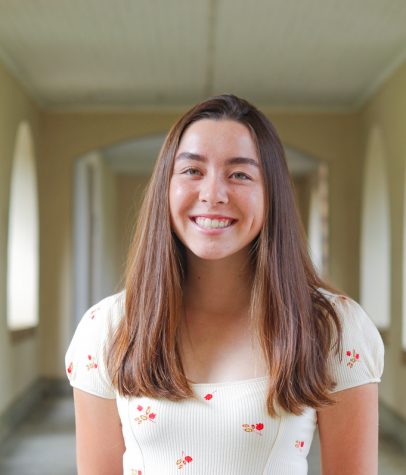Board shrugs off concerns, supports hybrid plan for January
November 11, 2020

Undeterred by overwhelming community objections at Tuesday’s board meeting to the proposed January reopening of Palo Alto Unified School District secondary schools, the Board of Education voted unanimously to approve the plan, with the two student board representatives voting against it.
The plan will have all secondary students choose between opting in to hybrid learning or maintaining the current model of distance learning by Nov. 18. Hybrid learners would return to campus twice a week to attend English and social studies classes, in stable cohorts of 30-60 students with between two and four teachers, while attending the rest of their classes through a distance model.
In introducing the proposed hybrid model, Superintendent Don Austin stressed that although the plan isn’t perfect, bringing any number of students back to school is progress.
“Capacity for about 30 plus percent at the secondary levels is less than I had personally hoped for,” Austin said. “I have to realize that it’s also 30 percent more than we have at our secondary schools today.”
Despite providing few answers to the many questions brought up by community members during the meeting, the Board approved the plan. After its initial vote, the Board passed a motion to solicit input from instructional leads and staff in continuous refinement of the plan at site levels.
“Distance learning is working for a lot of students, but there are some students who really need to be back in class,” Board member Shounak Dharap said. “So let’s find a way to bring back those kids and do it safely… This plan really strikes me as that.”
A significant majority of community speakers at the meeting weren’t satisfied, though. Topics of concern included increases in class sizes for distance learners, disruption of classroom communities and teacher-student relationships, and efficacy of in-person learning compared to distance.
Gunn English teacher Justin Brown said he agrees it may be necessary to bring certain students back to campus, but challenged the necessity to disrupt the schedules of all students to do so.
“The quality of instruction for students under hybrid conditions will flat-out be inferior to what it’s like over distance,” Brown said. “I teach classes that are predominantly discussion driven, and full-class discussions will definitely not be taking place for fear of spreading the virus.”
Other teachers lamented the lack of communication between the district and its teachers.
“Teachers who know best how things really function in the classroom and understand student needs have not been asked in any authentic way for input,” Paly history teacher Mary Sano said. “Instead, this plan seems to have one purpose, which is to get kids physically back on campus, but makes little sense regarding teaching [and] learning.”
Students emphasized worries over what changes in their schedules would mean, and argued that the current plan didn’t address their own priorities.
“I’m especially worried about changing classes,” Paly senior Jonathan Sneh said. “If one of my classes is dropped I’d have to tell every single college campus I’m applying to, creating a giant mess of stress. And also there’s other stuff that’s missing like laboratory sciences, social interaction, cohort extracurriculars. These need to be addressed in a new plan.”
Many argued that the education students would receive in-person would be a step in the wrong direction for students who have finally begun to adapt to learning from home.
In the classroom, “most of the components of professional best practices will be absent,” Gunn teacher Maria Powell said, adding that teachers and students will be stripped of the collaboration, group interactions and real-time feedback that distance learning provided.
“It’ll mostly resemble babysitting,” Powell said. “Pandemic-induced educational struggles won’t magically subside by putting students and teachers in the same space. Believing so is woefully ignorant of what good teaching and learning looks like.”
With class sizes of 14 for hybrid learners, distance classes will have to grow to accommodate for this change. And though, according to Austin, distance classes will not exceed 40 students, many were still concerned that quality of learning would fall short for distance learners.
“With huge class sizes, that implicates my ability to get timely feedback from a teacher, to get the teacher to really get to know me as a student and offer personalized feedback,” said Thomas Li, Gunn’s student board representative. “Class sizes we have now with distance learning are working pretty well for most students and I hope that we’re able to keep it, instead of moving a lot of students into these new classes in increasing class sizes.”
The two student board trustees, Li and Medha Atla of Palo Alto High School, indicated their desire to delay approval of the plan until input from teachers had been adequately incorporated.
“I don’t know if we’ll be able to ever come up with a better plan that will satisfy all of our requirements, but I do feel like it’s worth a shot,” Atla said. “And I think going back to the drawing board with more stakeholders at the table is something we should be at least considering and trying.”
Before the Board took to voting on the original motion, board member Melissa Baten Caswell proposed an amendment to delay voting on the plan for the sake of soliciting more teacher feedback in order to address community concerns that hasty approval of a plan with this level of detail would be ill-advised. The amendment failed, with the student board representatives and board members Jennifer Dibrienza and Baten Caswell voting in favor, and all others voting against.
“I agree with the sentiment,” Board president Todd Collins said. “But I think the Board specifying it [prior teacher and IL feedback] and making the plan approval contingent on it creates an obstacle where one doesn’t need to exist.”


